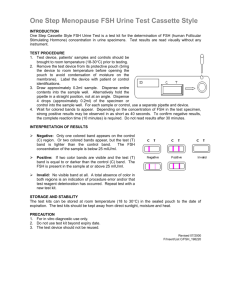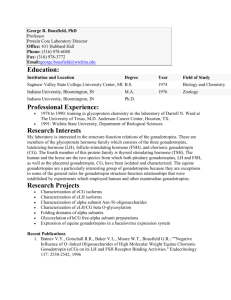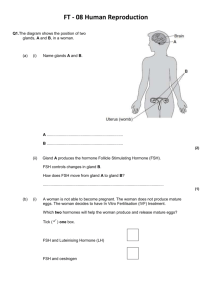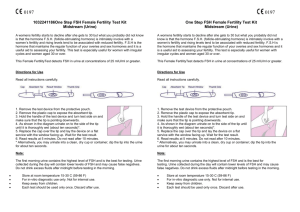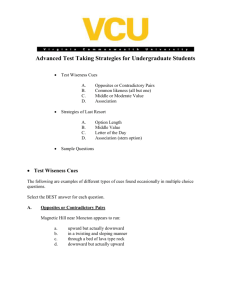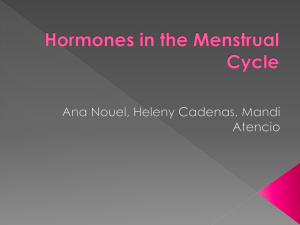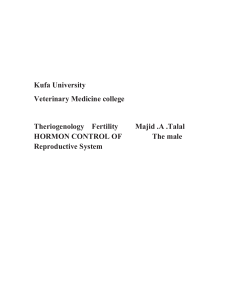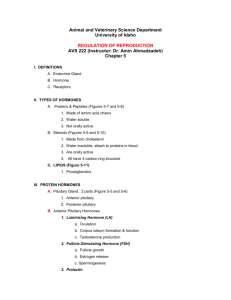Grant supports research of women`s infertility
advertisement
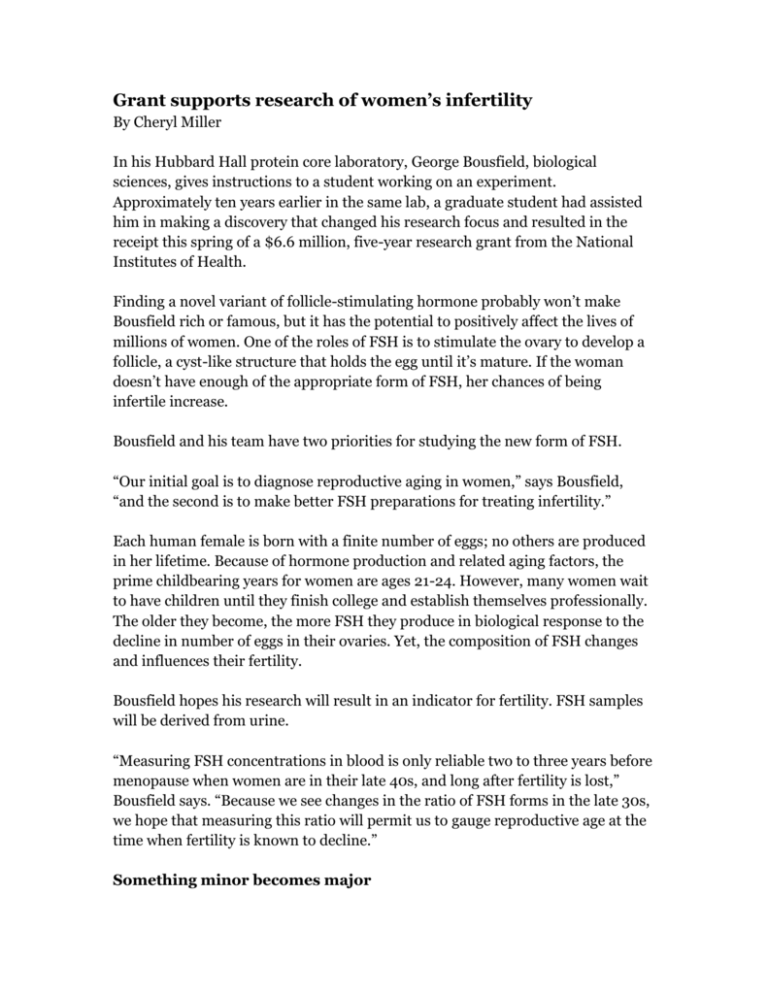
Grant supports research of women’s infertility By Cheryl Miller In his Hubbard Hall protein core laboratory, George Bousfield, biological sciences, gives instructions to a student working on an experiment. Approximately ten years earlier in the same lab, a graduate student had assisted him in making a discovery that changed his research focus and resulted in the receipt this spring of a $6.6 million, five-year research grant from the National Institutes of Health. Finding a novel variant of follicle-stimulating hormone probably won’t make Bousfield rich or famous, but it has the potential to positively affect the lives of millions of women. One of the roles of FSH is to stimulate the ovary to develop a follicle, a cyst-like structure that holds the egg until it’s mature. If the woman doesn’t have enough of the appropriate form of FSH, her chances of being infertile increase. Bousfield and his team have two priorities for studying the new form of FSH. “Our initial goal is to diagnose reproductive aging in women,” says Bousfield, “and the second is to make better FSH preparations for treating infertility.” Each human female is born with a finite number of eggs; no others are produced in her lifetime. Because of hormone production and related aging factors, the prime childbearing years for women are ages 21-24. However, many women wait to have children until they finish college and establish themselves professionally. The older they become, the more FSH they produce in biological response to the decline in number of eggs in their ovaries. Yet, the composition of FSH changes and influences their fertility. Bousfield hopes his research will result in an indicator for fertility. FSH samples will be derived from urine. “Measuring FSH concentrations in blood is only reliable two to three years before menopause when women are in their late 40s, and long after fertility is lost,” Bousfield says. “Because we see changes in the ratio of FSH forms in the late 30s, we hope that measuring this ratio will permit us to gauge reproductive age at the time when fertility is known to decline.” Something minor becomes major For many years, scientists believed there was only one form of FSH, one that included two-strands of glycans, a type of sugar. The strands were attached to each of the two protein chain subunits, alpha and beta, that made up the hormone. In 1999, one of Bousfield’s graduate students, Wendy Walton, conducted an experiment to isolate the protein subunits. Specifically, she was looking for a three-branch strand containing alpha subunits. She didn’t find what she was looking for, but she uncovered something much more significant. “Wendy found that there are two forms of the beta, or FSH-specific, subunit. One possesses the normal complement of two sugar strands, while the novel form lacks both strands,” says Bousfield. In order for changes to take place within a cell, FSH must orient in the correct shape and have the correct arrangement of proteins and sugars before it can bind to and activate its receptor. A variant of the hormone lacking some of the sugars might bind to the receptor but not necessarily activate it. “I recognized the importance of that immediately,” Bousfield says. The key to better understanding infertility lay before him. However, the funding agencies weren’t as easily convinced and the NIH rejected his grant applications to research the novel form many times over the next 10 years. “The problem with what Wendy found was that it was a minor form and biochemists tend to ignore minor forms because they’re usually not important,” he said. However, this form was important. The primary source of FSH production occurs in the pituitary gland, which is located at the base of the brain. Because it cannot be accessed easily, most research involving the pituitary gland comes from those donated from autopsies. A pathologist in Arizona gave Bousfield 24 pituitary glands, mostly from females ages 21-81. In testing, Bousfield found that women of ages 21-24 produce more of the two-strand glycan (minor form) than the four-strand (major form). More important, Bousfield found this minor form to be 10- to 25-fold more active than the major form. This signified that in young women the minor form is actually the major form. It also became clear that there is a progressive decline in the abundance of two-strand FSH as a woman ages. “There is a fundamental change in the hormone as women age,” says Jeff May, biological sciences. “The sugars on the hormone alter the way it acts.” The main issue, May says, is to determine whether the two-strand glycan is key to better treatments. Bousfield agrees. “The current FSH treatment formula has worked well for young women, but it doesn’t work for older women,” says Bousfield. “We’re hoping our research will lead to preparations being more effective in older women, if that’s possible. We don’t know yet that it is.” The transition of the novel form raises other questions. “Another key point relates to when the shift from two-strand to four-strand occurs. At peri-menopause, the transitional period preceding menopause?” says May. “There may be a signal from the changing ovary telling the pituitary to produce more of the four-strand form. This may be of diagnostic value for determining the initiation of the peri-menopausal period in women.” Aside from fertility, there may be other applications from the novel form of FSH. Peri- and post-menopausal women experience an accelerated rate of bone loss as they age. May says that for years scientists believed decreased estrogen production by the aging ovary was the fundamental defect underlying bone loss, that is, osteoporosis. However, studies in mice indicate there is no bone loss when estrogen is low or absent from the body if FSH is also absent. Thus, he says, FSH may be the active factor underlying osteoporosis. Two-strand FSH is active at the ovary in young women and has low bone impact, but the four-strand form is active on bone in older women, and has less impact at the ovary. May postulates that it is the dramatic rise of four-strand FSH that influences bone loss. Although five years may seem to be a long time for research projects, it is not. Bousfield and his team have several projects underway now, and Bousfield has already started the process of getting the grant renewed. Next steps The NIH grant covers three related projects involving researchers at three institutions. At WSU, Bousfield will study how FSH glycoforms intersect with receptors and study glycoform levels in young, middle-aged and post-menopausal women. John Davis, University of Nebraska-Omaha, will study the signaling pathways inside cells the glycoforms activate. Rajendra Kumar, University of Kansas Medical Center-Kansas City, will create mouse models to test the hypothesis that both FSH forms are required for reproduction. Other collaborators in the grant-funded research include Joe Murray, a former Wichita State faculty member, and current WSU scientists Bin Shuai, Vladimir Butnev, and May. Additionally, at WSU three graduate students, three undergraduate students and three technicians will provide laboratory support and data collection.
